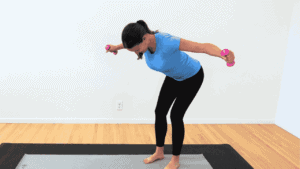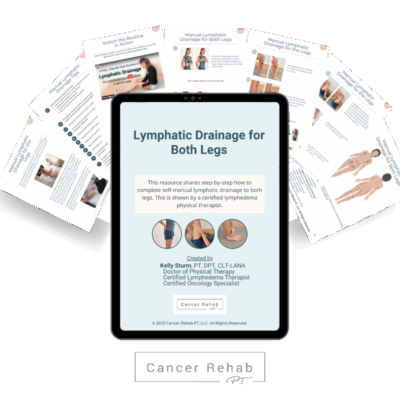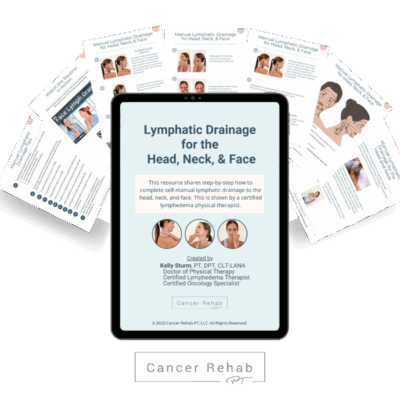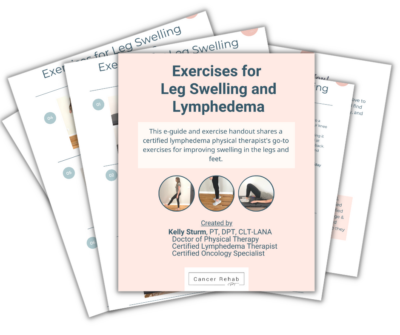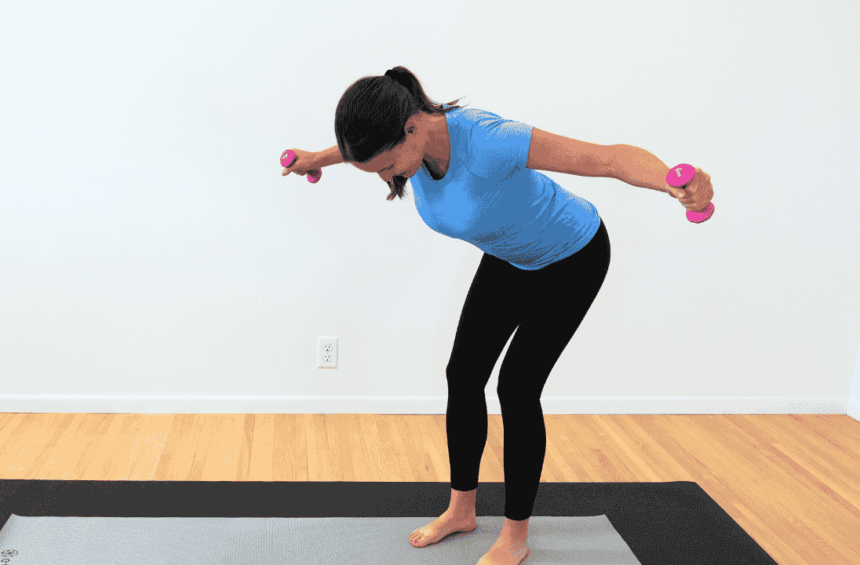Scar tissue formation is a natural part of the healing process after a mastectomy. However, scar tissue pain years after mastectomy is not something you have to continue to endure. There are steps you can take to soften the scar tissue, relieve discomfort, and improve your quality of life.
Everyone’s healing timeline is different, but even small changes in treatment can lead to big results. Let’s get started!
Understanding Scar Tissue After Mastectomy
Scar tissue forms as a natural part of the body’s healing process following breast cancer surgery. When the skin is damaged, your body responds by producing collagen fibers to repair the wound. However, this collagen formation can sometimes lead to the overproduction of tissue, resulting in the formation of a scar.
Scar tissue is not as flexible as healthy skin and can make the affected area feel tight or restricted. Breast tissue can become painful, especially when you try to lift your arm or do other motions that stretch your post-mastectomy scar. Scar tissue can also thicken surrounding areas or adhere to surrounding tissue, muscles, and tendons, which makes pain and limitations worse.
It’s important to remember that while scar tissue formation after breast cancer surgery is normal, living in pain is not.
If you experience scar tissue pain after breast cancer treatment, there are steps you can take to minimize the symptoms and reduce discomfort.
What Does Scar Tissue After Mastectomy Look Like?
Scar tissue after mastectomy often presents as a raised, thickened area of skin at the site of breast surgery. Its appearance can vary depending on your healing processes and surgical techniques used during the surgery.
In some cases, the scar tissue may appear red or pink post-mastectomy, gradually fading to a lighter color over time. Discoloration of the scar tissue is also common and some pigmentation may occur as the skin heals.
While this may be bothersome, remember that the scar appearance will likely improve over time as the collagen matures and your skin becomes more elastic. Mastectomy scars never completely disappear, but they can become much harder to see.

Risk Factors for Scar Tissue Pain after Breast Surgery
There are a few factors that can influence scar tissue formation and pain after breast cancer surgery. That said, every person is different, and having some of these risk factors doesn’t necessarily mean that you’ll develop pain after breast surgery.
Surgical Technique
The method your surgeon uses during the mastectomy can impact the amount and quality of scar tissue formed. Techniques that involve greater tissue trauma and larger incisions may result in more extensive scar tissue formation.
Infection
Infections at the surgical site can interfere with the healing process and contribute to the formation of excessive scar tissue. To avoid infections, make sure to keep your surgical scar clean and do proper dressing changes.
Genetics
Genetic factors may influence how your body responds to injury and healing. Some people are more prone to scarring after breast cancer treatment.
Age
Older people may experience more extensive scar tissue formation because of skin changes that occur with age.
Radiation Therapy
If you undergo radiation therapy after the mastectomy, you may be at a higher risk of developing scar tissue pain due to the effects of radiation on the skin and tissue.
Health and Lifestyle
People in poor health, those who have chronic medical conditions such as diabetes or immune system disorders, and smokers are more prone to still having scar tissue pain years after mastectomy.
How to Break Up Scar Tissue After Mastectomy: 6 Ways to Reduce Pain and Heal
If your scar tissue after breast surgery is bothersome and painful, there are ways to manage it with physical therapy and self-care practices.
As a Doctor of Physical Therapy and a Board-Certified Oncology Specialist with a degree from the Mayo Clinic, here are some of my favorite things to do to alleviate breast tissue pain after a mastectomy.
1. Keep It Clean
First and foremost, maintaining proper hygiene around the surgical site is crucial for preventing infections and promoting optimal healing of scar tissue.
Clean the area gently with mild soap and water, avoiding harsh scrubbing that could irritate the skin. Keeping the incision site clean and dry can help minimize the risk of complications and facilitate the healing process.
2. Moisturize
Moisturizing the scar tissue regularly can help improve its texture and flexibility. Choose a gentle, fragrance-free moisturizer and apply it to the scar tissue using a gentle, circular motion. You can use petroleum jelly or Vaseline, but I also like Vitamin E Oil and a Silicone Gel to decrease scarring. They can help create a moisturized barrier over the scar and prevent scabbing.
Avoid excessive chemicals and filler ingredients, such as alcohols and fragrances, when choosing a moisturizer or an oil for your breast tissue. The cleaner the ingredient list is, the better. Chemicals can irritate the scar tissue and increase pain. I recommend this Natural Vitamin E Oil, Silicone Scar Gel, or Silicone Scar Sheets.
3. Scar Tissue Massage
Scar tissue massage can help decrease the thickness of the scar and improve tissue and skin mobility.
You can follow up with a physical therapist or your medical team to get some guidance on how to get started with scar tissue massage. The idea is to try to pick up and roll over your scar tissue, which helps break down the scarring and soften the area. I show how to do it in my YouTube Video below.
4. Soft Tissue Mobilization (STM)
Soft tissue mobilization techniques focus on manipulating the underlying soft tissues to reduce tension and discomfort. The sessions should take 15-30 minutes, followed by 10-15 minutes of stretching. You can find in-depth demonstrations of Soft Tissue Mobilization techniques in my program Breast Cancer Rehab.

You can do Soft Tissue Mobilization at home, but you should first get cleared by your doctor. Your surgery incisions should be fully healed, and it’s important to keep your hands clean to avoid the development of an infection.
5. Use Sunscreen
Protecting scar tissue from sun exposure is essential for minimizing discoloration and promoting optimal healing. Exposure to ultraviolet (UV) rays can cause pigmentation changes in scar tissue, leading to darkening or uneven skin tone.
Apply a broad-spectrum sunscreen with a minimum SPF of 30 to the scarred area whenever it is exposed to the sun. Sunscreen helps prevent further damage to the skin and reduces the risk of hyperpigmentation, allowing the scar tissue to heal more effectively.
6. Active Stretching
Incorporating active stretching exercises into your daily routine can help improve flexibility and range of motion around the scar tissue.
Do gentle stretching movements targeting the chest, shoulders, and arms to prevent stiffness and adhesions from forming. Active stretching promotes blood flow to the area, facilitating tissue softening and reducing nerve pain and discomfort after breast cancer surgery.
I show the most effective stretches for scar tissue in Breast Cancer Rehab. If you’re looking for an easy and gentle exercise routine to get back into movement after a mastectomy, I share some exercises in my YouTube video below. While they’re not specifically targeting scar tissue, they can still be helpful.
Scar Tissue Pain Years After Mastectomy FAQs
What does mastectomy scar tissue feel like?
Mastectomy scar tissue can trigger various sensations, ranging from mild discomfort to more pronounced pain and tightness. Initially, you may experience tenderness and sensitivity around the surgical site as the scar tissue begins to form.
As the scar tissue matures, it can feel thickened and firm, often causing a pulling or stretching sensation in the surrounding tissues. Some people may describe the sensation as a dull ache or pressure, particularly during movements that engage the chest or shoulder muscles. Scar tissue may also feel raised or lumpy to the touch, depending on the extent of healing.
How do you break up scar tissue after a mastectomy?
It’s important to remember that while scar tissue formation after breast cancer surgery is natural, it doesn’t mean that you have to accept living with limitations as your new normal. It’s possible to break up scar tissue after mastectomy with techniques like scar tissue massage, Soft Tissue Mobilization (STM), and active stretching. You can find the techniques I’ve used with my patients in my program Breast Cancer Rehab.
Should I massage my mastectomy scar?
Yes, massaging your mastectomy scar can be beneficial for promoting healing and reducing discomfort. Scar tissue massage, when performed gently and with proper technique, can help break down adhesions and improve circulation to the area, leading to softer, more flexible scar tissue. However, it’s essential to consult with your healthcare provider or a qualified physical therapist before beginning scar tissue massage to ensure that it is safe and appropriate for your specific situation.
How long do mastectomy scars take to fade?
The duration for mastectomy scars to fade varies greatly from person to person and depends on factors such as individual healing processes, skin type, and the extent of the surgery. In general, most scars will continue to fade and become less noticeable within the first year post-surgery.
However, it’s essential to note that complete scar fading may take several years, and some individuals may experience permanent discoloration or texture changes in the scar tissue. Consistently using sunscreen and practicing proper scar care techniques can help minimize pigmentation changes and promote optimal scar healing.
Do I have to accept scar tissue pain years after mastectomy as normal?
No, you don’t have to accept pain and discomfort as a part of your daily life after breast cancer surgery. There are techniques and self-care practices to break up scar tissue, minimize limitations, and heal after a mastectomy or other types of breast surgery.
As a Doctor of Physical Therapy and a Board-Certified Oncology Specialist, I’ve helped hundreds of patients reclaim control and improve their quality of life after breast cancer. I wanted more people to have access to these tools, so you can find in-depth knowledge and effective techniques in my program Breast Cancer Rehab.

